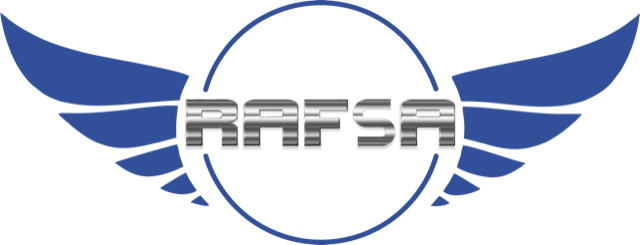Welcome to RAFSA, the home of the RAF2000 Gyroplane
The RAF 2000 gyroplane is a sleek, well-designed, two place gyroplane with an enclosed fuselage that boasts sought-after standard features such as side by side seating, in-cabin heat, removable doors, full electronic trim, patented rotor stabilator, rotor blades by design using leading air foil technology and composites and four-cylinder four cycle power plant. The patented mast to keel engagement forms a robust framework for unequalled structural integrity, while maintaining a very simplistic design well within the intellectual understanding of the aviation enthusiast. Make your quest to fly a reality with the RAF 2000.
Top of the Line Performance
![]()
The smooth contours and curves of the RAF 2000 are design features built into the RAF 2000 to enhance the performance of this industry leading aircraft. The reliable four-cylinder opposed Subaru engine gives the RAF 2000 smooth acceleration through the full range of speed, accelerating to 100 MPH with ease.
Innovation in design of the RAF rotor system coupled with the power of the Subaru engine gives the RAF 2000 the largest payload of any gyroplane in the industry. This uniquely designed industry leader boasts payloads up to 700lbs with the room and the power to get the job done.
Performance to out climb, outrun and outlast any competition, the RAF 2000 will meet and exceed your performance expectations.
What is a Gyroplane?
An autogyro (from Spanish autogiro), also known as gyroplane, gyrocopter, or rotorplane, is a type of rotorcraft which uses an unpowered rotor in autorotation to develop lift, and an engine-powered propeller, similar to that of a fixed-wing aircraft, to provide thrust. While similar to a helicopter rotor in appearance, the autogyro’s rotor must have air flowing through the rotor disc in order to generate rotation.
A Gyroplane in South Africa is classified as a non-type certificate aircraft (NTCA) either amateur built or production built, a flying machine similar to a helicopter but in some ways kind of like an airplane. It has a rotor blade like a helicopter but cannot climb vertically and requires an airplane-like roll or run to become air-born.
The key to understanding what makes a gyroplane fly is the principle of Autorotation. Unlike a helicopter, the overhead rotor on a gyroplane is not powered (ie: it is freewheeling). The passage of air flowing upward through the slightly tilted rotor blades causes them to spin and the blade (air foil shape) creates lift. The rotor blade is kept turning by the forward speed of the gyroplane which is achieved with a simple engine and propeller. The amount of lift created depends upon a compromise between the airspeed of the rotors, and the resistance that the rotating blades offer to the airflow past them. In practice, the desired lifting force is only produced when the blade speed greatly exceeds the forward speed of the machine.
Gyroplanes are a unique aircraft clearly distinguishable from airplanes. The most obvious contrast is the rotating primary lift surface of the gyroplane compared to the fixed wing of the airplane. The primary lifting surface of the gyroplane also acts as a control surface for pitch and roll movements whereas a fixed- wing uses much smaller ailerons and elevators. Furthermore, this lifting surface suspends the fuselage against gravity during flight. Rotational freedom about two axes exists at the joint between lifting surface and fuselage. The pilot manipulates these two free rotational axes for rotor control from the fuselage.



